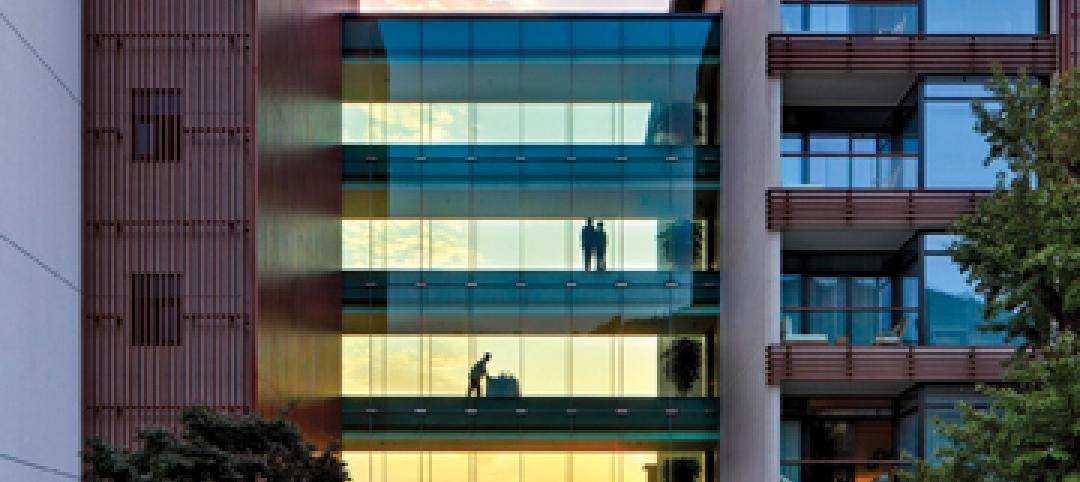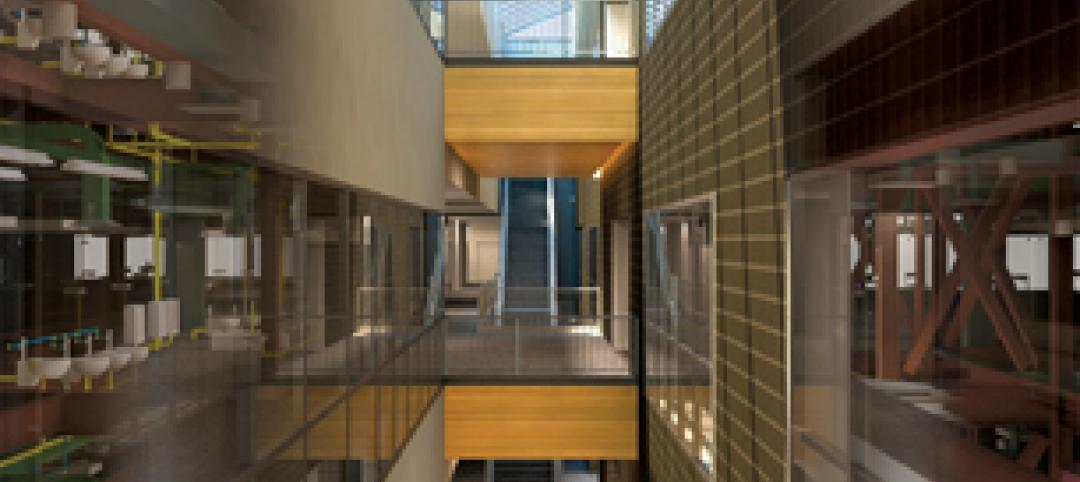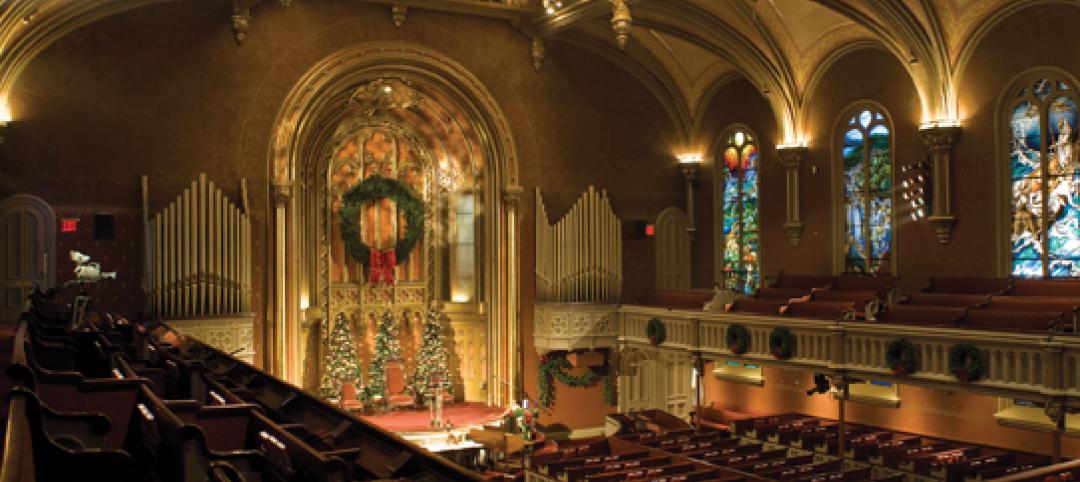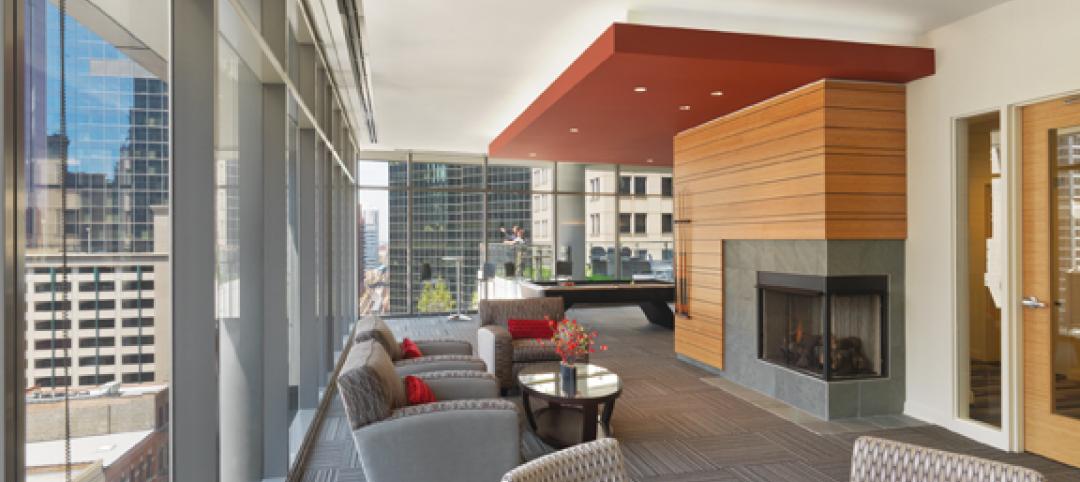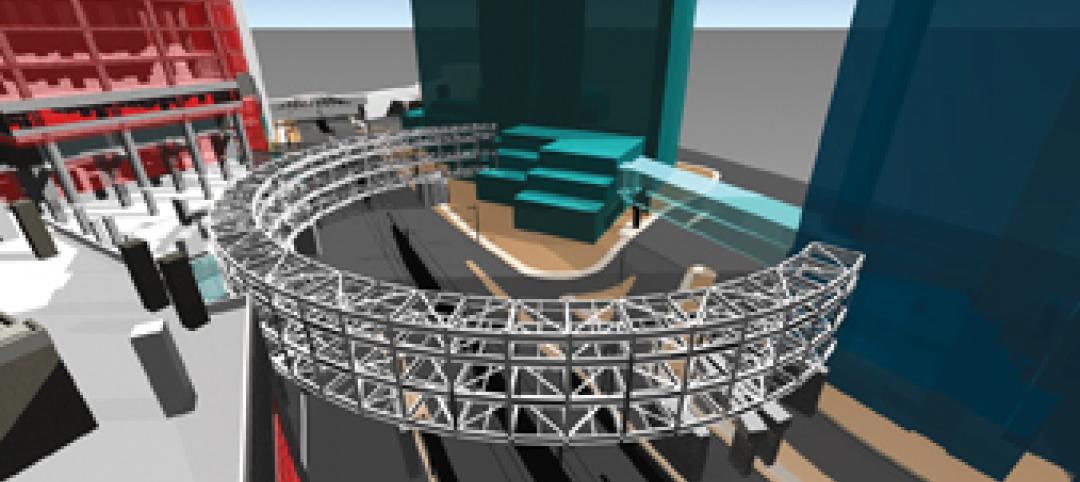The Cuyahoga County Soldiers’ and Sailors’ Monument was dedicated on the Fourth of July, 1894, to honor the memory of the more than 9,000 Cuyahoga County veterans of the Civil War. The small but impressive structure, with a 125-foot column topped by a statue named “Goddess of Freedom,” holds a place of prominence in Cleveland’s Public Square.
In August 2006, the Cuyahoga County Commissioners called for a modest renovation, cleaning, and relighting of the monument, under the supervision of county architect Berj A. Shakarian, AIA, CSI. The $1 million cost was to be raised by a nonprofit foundation, the Soldiers’ and Sailors’ Monument Support Group.
Extensive research by the Cleveland design firm Westlake Reed Leskosky (with Peter van Dijk, FAIA) determined that more extensive work was required than originally anticipated. The roof needed re-caulking. The marble tablets were bent out of shape and discolored. The stained-glass windows needed restoration. In all, the cost would double. Undeterred, the support group raised nearly $2 million from state and county funds and contributions from foundations, businesses, veterans’ groups, and private individuals.
The work began in late 2008. Perhaps the most unusual technical problem had to do with the commemorative tablets. The 4x7-foot slabs, about an inch thick, each weighing 350 pounds, had to be cleaned so that the marble veining could show through the original yellow tint. The traditional technique, mud-based poultice, was ruled out. Research determined that a latex-based cleaning product, if applied and allowed to dry for 13-15 hours, would form a film that could be peeled off. Though tedious, the technique cut the usual cleaning time from three months to three weeks.
Many of the many of the marble slabs were bent out of shape, and the Building Team considered using a method developed by Lord Raleigh in the 1920s—soak the slabs in hot water and bend them back under pressure—but the National Park Service nixed the idea. Instead, to at least stabilize the slabs, the team installed a fin-tube heating system, dehumidifiers, and air-conditioning to control the humidity that was deemed to be the likely cause of the distortion problem.
Detailed research into the marble decoration revealed that the monument had three levels of coloration: tinting (to allow the veining to show through); marbleizing (where veining is augmented or added); and ornamentation (where both tinting and marbleizing are used along with non-opaque colors).
Balancing their research findings, the demands of historical accuracy, and aesthetic interpretation, the team developed a palette of eight colors to restore the original polychromatic interior marbles to their original brilliance. Careful attention was paid to sealing the finishes.
Fourteen Tiffany-style stained-glass windows—two above the entry doors depicting sunrise and sunset, the other 12 portraying military regalia and imagery—were found to be bulging or missing glass. Team members traveled to Chicago to find perfect matches for the missing glass, and the windows were disassembled, repaired, cleaned, and reinstalled.
To enhance the visitor experience, new fluorescent, track, and LED lighting was carefully balanced to enhance the freshly tinted and re-inked lettering of the marble tablets and highlight various accent items.
The final touch had to do with a bronze relief of President Lincoln. Photographic research showed that, as late as 1932, Lincoln was holding the shackles of a freed slave in his right hand, but the shackles had gone missing for more than 40 years. The Building Team restored the shackles in time for the grand reopening last June.
“The research was the most difficult part,” said jurist Tom Brooks, VP, Restoration Division, Berglund Construction, Chicago. Added judge Darlene Ebel, Director, Facilities Information Management, University of Illinois at Chicago, “Restraint was used. It takes a lot of judgment to decide what level of restoration to do. What they did was absolutely right.”
“This is an inspiring project,” said George Karl Tuhowski, III, LEED AP, general superintendent, Leopardo Construction, Hoffman Estates, Ill. “No stone was left unturned.” BD+C
PROJECT SUMMARY
Building Team
Submitting firm: Soldiers’ and Sailors’ Monument Support Group
Owner: Cuyahoga County Soldiers’ and Sailors’ Monument Commission
Architect/Interior design/MEP engineer/Historic specialist: Westlake Reed Leskosky with Peter van Dijk, FAIA
GC: EnviroCom Construction, Inc.
General Information
Size: 1,600 gsf with 125-foot column and statue
Construction cost: $2.0 million
Construction period: May 2009 to May 2010
Delivery method: Design-bid-build
Related Stories
| Jul 20, 2012
K-12 Schools Report: ‘A lot of pent-up need,’ with optimism for ’13
The Giants 300 Top 25 AEC Firms in the K-12 Schools Sector.
| Jul 20, 2012
Higher education market holding steady
But Giants 300 University AEC Firms aren’t expecting a flood of new work.
| Jul 20, 2012
3 important trends in hospital design that Healthcare Giants are watching closely
BD+C’s Giants 300 reveals top AEC firms in the healthcare sector.
| Jul 20, 2012
Global boom for hotels; for retail, not so much
The Giants 300 Top 10 Firms in the Hospitality and Retail sectors.
| Jul 20, 2012
Gensler, Stantec, Turner lead ‘green’ firms
The Top 10 AEC Firms in Green Buildings and LEED Accredited Staff.
| Jul 19, 2012
Renovation resurgence cuts across sectors
Giants 300 reconstruction sector firms ‘pumping fresh blood in tired spaces.’
| Jul 19, 2012
Rental market pushing service, ‘community’
The Top 25 Giants 300 AEC firms in the Multifamily Sector keep four-legged tenants in mind.
| Jul 19, 2012
AEC firms ready to dive into public projects
But the size of the pool keeps shrinking for the Top 25 AEC firms in the Government Sector.
| Jul 19, 2012
BIM finally starting to pay off for AEC firms
In surveying Giants 300 firms about BIM, we went right for the jugular: Is BIM paying off—through cost savings, higher quality, or client satisfaction? Here’s what they told us.






